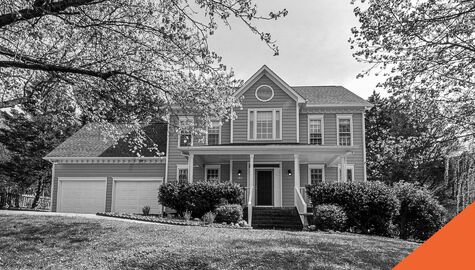The BIG New House Checklist
Tuesday, 18 June 2019
Buying a new house is an exciting time but the process can be a little overwhelming. Being prepared before you go and speak to your realtor can help make the process a lot smoother. Having a new house checklist can help you in this process too!
From location, budget and home requirements there are a lot of details that can sometimes be forgotten as soon as you step foot in the house you are viewing. In addition, great houses typically go fast so you want to be sure you can put in an offer if the house you are viewing checks off all your requirements!
To help get you started, we’ve put together a new house checklist of things to check for when house hunting. We have also created a free printable new house checklist which you can complete at your house visits.
Step One: Create Your New Home Checklist
Before you start, you need to determine the basic requirements for your home. This includes the following:
How many bedrooms do you need at a minimum?
You may have to plan a little bit into the future here. If you are looking at potentially growing your family or if your current children may need their own room in the future, you may need additional bedrooms. Is a guest room important to you? If so, you’ll need to include that on your list. In addition, where should these bedrooms be located? If you have younger children or are planning on having children soon, you will unlikely want them in the basement bedroom if you are on the second level.
How many bathrooms do you need at a minimum?
How many bathrooms do you need in your new home? Are ensuite master bathrooms a must have for you or do you just need a bathroom on each floor? You’ll also need to determine how many two-piece, or four-piece bathrooms are important to you. A two-piece bathroom just includes a sink and a toilet whereas a four-piece bathroom includes an additional two other fixtures: typically, a bath and shower.
What is your minimum square footage?
In 1975, the average size of a house in Canada was 1,050 square feet. Today, the average size of a house in Canada has doubled in size! In North America, we typically live in some of the largest homes in the world. If you are already in a home that you are outgrowing, square footage is likely top priority. Whereas, if you are looking to downsize you may have a maximum square footage that you are willing to own. If budget constraints dictate a smaller square footage, you may want to consider which rooms you prefer to be larger. If you prefer a larger family room but are ok with smaller bedrooms, decide that so it helps narrow down what you would like in a house.
What is your budget?
This is an important step to determine what you can afford. If you are going to need a mortgage, it is advisable to speak to a mortgage advisor or mortgage broker to determine how much you can borrow. You should also check to see how this amount will fit into your budget comfortably. Be sure to let your realtor know how much your budget is and depending on the housing market, you may wish to look at houses a bit below your budget in case you need some extra wiggle room for an offer slightly above asking. A good realtor will help you navigate what a house is truly worth and what you should pay.
Step Two: New House Checklist – Determine Your Preferred Location
Deciding on your home location can be the most challenging decision. Different locations may have different price points for the same type of house. For example, the average house price in Toronto was $779,000 in 2018 compared with $391,000 in the Niagara Region.
The neighborhood is one of the most important decisions when choosing a home for your and your family. You’ll need to take into consideration the following:
- How close is it to your workplace? Are you willing to commute and if so, how far?
- How close is it to your family & friends? Is this an important factor for you?
- If you have school-age children or plan on having children in the lifetime of your home, you need to check the schools in the area.
- Make sure you choose a location that suits your lifestyle. Do you prefer being in a city with a lot going on each week or would you rather a more rural community?
You may also want to consider any additional fees that are associated with living in a certain area. Cost of insurance can vary depending on your location. This includes crime rates in the area and risk of flooding. Taxes in certain cities vary too.
Step 3: Inspect your House Exterior
When you arrive at your house, don’t forget to inspect the exterior of your home. You should make note of the following:
Roof
If you are buying a home that is over ten years old, you’ll want to check to see if the roof has been replaced. Typically, roofs should be replaced every 15 to 50 years which can be a large expense. You should also make note of the quality of the roof such as any missing shingles, holes or sagging roof line and discoloration.
Foundation
Does your home’s foundation appear to be in good shape? Red flags include any large cracks or damage. This may be a bit of a challenge to assess yourself so a Home Inspection prior to purchase is advisable especially with an older home.
Driveway
Firstly, how many spaces in the driveway do you need? If your family owns multiple vehicles, on street parking may pose a challenge in the winter depending on the snow removal by-laws in your city.
Also check to see the condition of the driveway, this may be something you’ll want to replace at a later date which can by costly.
Step 4: Check Your Interior Requirements
Your family will be spending most of their time inside your home. It can be easy to get caught up in things that are relatively easy to fix such as paint colors but instead focus on flow and layout as well as the following factors.
Kitchen
Kitchens are one of the most expensive rooms to update so may be one of the rooms you want to focus on. If you are not looking to replace the whole kitchen, these may be some factors that you’d like to consider:
- Is there any visible damp, mold or mildew in the kitchen?
- Do you have enough storage and cabinet space for your needs?
- Are there any visible leaks in the faucets / appliances?
- Is the design of the kitchen your style?
Again, depending on what you are looking for some of these factors may not be important to you. These are just some items that you may wish to consider adding to your new house checklist.
Bathroom(s)
The bathrooms are also one of the most expensive rooms to update and so if you are not willing to renovate right away, you may want to consider whether the bathrooms meet your requirements. Firstly, how many full and half bathrooms do you require your home to have? If you have small children, the location of these may also be important to you. Secondly, do you prefer having a shower, tub or do you require both? Once you have checked the layout and appliances, note any areas of concerns such as visible damp, mold or leaky faucets.
Bedrooms
The appearance of the bedrooms is largely changeable but there are several considerations you should think about adding to your new house checklist.
- How many bedrooms do you require? Don’t forget a guest room if this is something that is important to you.
- Location of bedrooms – do you have a preference where these are? If there are basement bedrooms, be sure to check that they are to code and have windows for safety.
- Does each bedroom have a built-in closet? If not, is this something that is important to you?
- Do you prefer an en-suite bathroom in the master bedroom?
Step 5: Other Considerations
Once you have decided on the key elements of your ideal home, it is time to think about more of the details. This includes:
- What is your ideal layout? Do you prefer open concept or individual rooms?
- What type of flooring are you looking for? Are you willing to change this?
- Is there enough natural sunlight in the rooms or will you need extra lighting?
- Are the windows big enough in the main rooms and bedrooms?
- Is there a fireplace?
- Is there a smoke detector and carbon monoxide detector on each floor?
- Does the house have a finished basement?
In Conclusion
When it comes to house hunting, having a clear picture of your must haves will avoid thinking with your heart instead of your head. It’s important to love your home but if you settle for something less than what you need, you may end up wanting to move again once the novelty has worn off. Using a new house checklist can help focus your mind and determine what compromises you are willing to make on areas that are less important to you.
Once you’ve purchased your home, don’t forget to inform your Insurance Broker and arrange for a quote for your new home. Our BIG Insurance Brokers shop from some of the top Insurance Carriers in Canada to ensure you get the best coverage for a great price. Contact us today!



